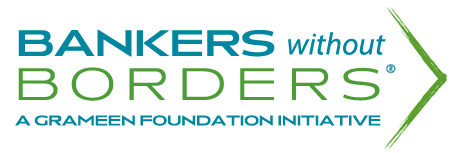Michael Castellano is a graduate student at The George Washington University, studying International Affairs and Development. He interned with Bankers without Borders® at Grameen Foundation during the spring of 2012. In the years following the global financial crisis, politicians and policymakers across the globe have harped on one cardinal goal: economic growth. Without a doubt, plans for growing the economy will dominate discussions in the upcoming U.S. presidential election. It seems as though we as a society have collectively determined that if only the economy would turn around, conditions would certainly improve across the board. If only we could enact legislation to spur economic growth, inevitably we would all be better off. Fortunately, statistics show that the United States has seen steadily climbing annual growth rates since the nadir of the “Great Recession.” Developing countries and emerging economies have, on the whole, experienced average growth rates of more than 5 percent thus far in 2012 and will continue to propel the world’s progress, according to financial forecasts. So – this is good news for everyone, right? Not necessarily. Although a country’s national economy may grow, the poorest of the poor often remain completely disconnected from the financial, political and social systems in place. Without active bank accounts, the poor cannot easily save or access other financial services. In rural villages, people may not have easy access to healthcare and can quickly fall victim to external shocks such as disease or natural disaster. Without these services, poor people around the world cannot reap the benefits of overall economic growth. During my time at Grameen Foundation and through my studies in International Development during this past year, one fundamental lesson has stood out: Though economic growth is certainly important, growth does little to reduce poverty if the poor lack access to essential services. This illustrates a key principle that development practitioners dub “pro-poor growth.”
 Michael Castellano, shown here during a trip to Australia, served as an intern at Grameen Foundation this spring.
Michael Castellano, shown here during a trip to Australia, served as an intern at Grameen Foundation this spring.
Pro-poor growth involves forming development policies and strategies that target the poorest of the poor and offer new ways of connecting them to financial markets. Professor Muhammad Yunus, Nobel Prize laureate and founder of Grameen Bank, stated, “The direct elimination of poverty should be the objective of all development aid. Development should be viewed as a human rights issue, not as a question of simply increasing the gross national product.”
Pro-poor development strategies equip individuals with resources and capital, and focus on financial literacy and skill development, to enable the poor to develop their own profit-generating businesses and sustain an adequate livelihood. For example, a woman in small village in India who weaves baskets for a living may ordinarily have to pay up-front for the raw materials, or hand over her crafts to a larger vendor for a small fee. After paying off middlemen, the woman may receive a tiny fraction of the actual profit from her work. However, if this woman receives a grant to purchase her own capital and materials and is given the training to start her own business, she can earn more and provide a better livelihood for herself and her family. Grameen Foundation puts these strategies into practice and affirms its commitment to pro-poor growth on a daily basis. During my first day on the job, as I pored through orientation materials, I was confronted by a statistic that every person at Grameen Foundation knows by heart: In the world today, more than 1 billion people live on less than $1.25 per day, struggling below absolute poverty levels by all standards. Chronic poverty afflicts these individuals in a number of ways, keeping them trapped in a seemingly endless cycle of deprivation. Through innovative programs and initiatives, Grameen Foundation pursues its mission to eliminate global poverty. Its well-known Progress Out of Poverty Index® (PPI®) tool helps microfinance institutions and other poverty-focused organizations demonstrate measurable results and identify client needs. Its pioneering uses of mobile technology and apps continue to offer clients practical and functional ways to dramatically increase their quality of life, right over their mobile phones. And, of course, its Bankers without Borders (BwB) volunteer initiative enables generous professionals from the private sector to share the knowledge and skills from their own careers with pro-poor organizations around the world. All of these programs directly affect the poor in developing countries. I remember how impressed and inspired I felt the first time I read Prof. Yunus’s Banker to the Poor: Micro-Lending and the Battle Against World Poverty years ago. Today, as I wrap up my stint as a BwB volunteer, I am again inspired. I have learned a great deal about strategies for pro-poor growth and what constitutes effective development work. After speaking with others at Grameen Foundation, I am particularly interested in the potential of mobile technology in development, and hope to use what I have learned in my capstone project and field work next year as part of my graduate degree. In a way, I have experienced my own form of growth, and I look forward to continuing my studies with the background that I have received from Grameen Foundation. To quote Prof. Yunus again, “Each of us has much more hidden inside us than we have had a chance to explore. Unless we create an environment that enables us to discover the limits of our potential, we will never know what we have inside of us.” Grameen Foundation has created an enabling environment for my own personal growth, and throughout my future development pursuits, I hope to maintain a close relationship with Bankers without Borders.

